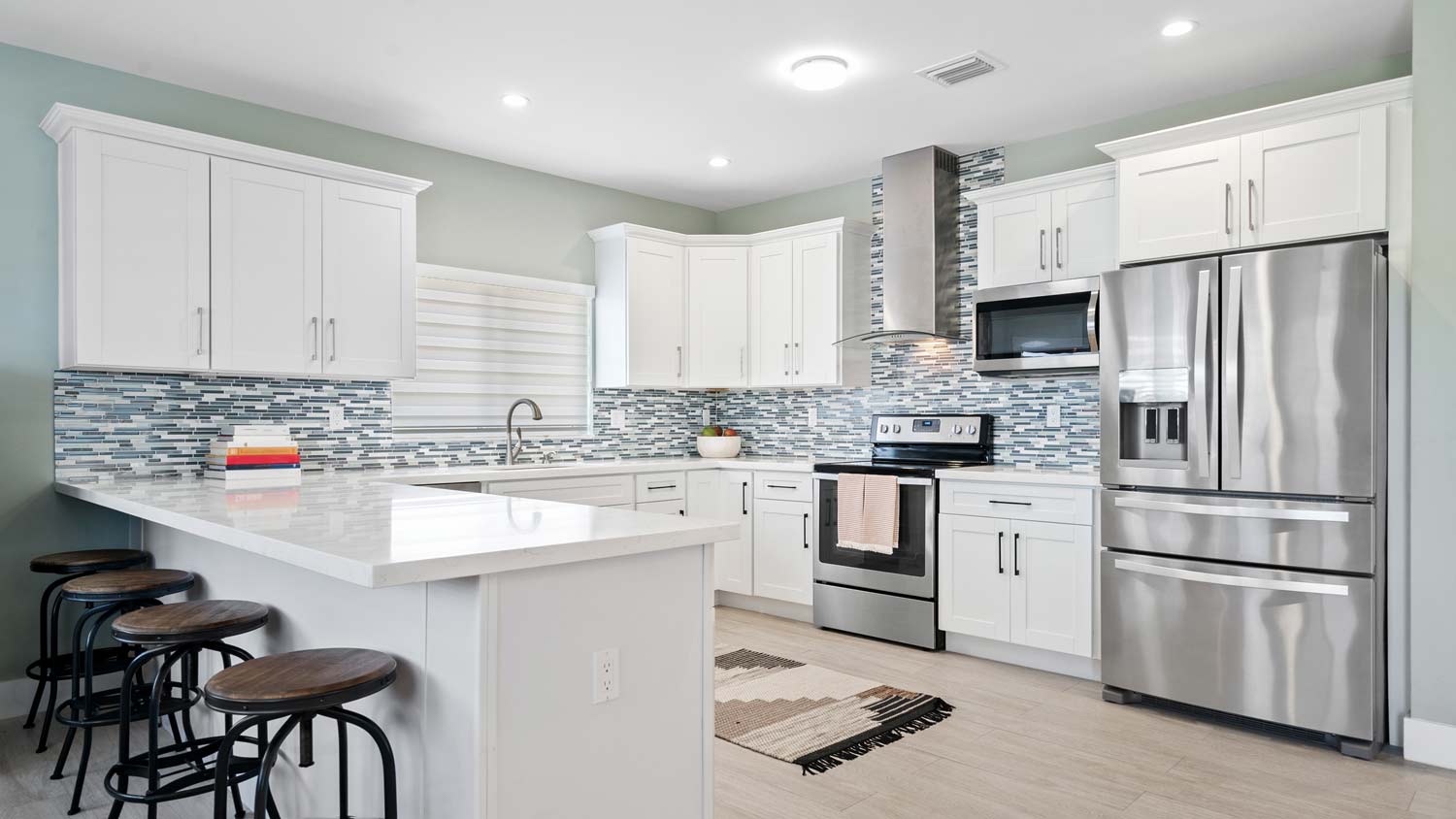Who Installs Whole-House Humidifiers?
Hire a licensed HVAC technician to install a whole-house humidifier


When it comes to installing a whole-house humidifier, hiring a licensed HVAC technician is the most reliable option. HVAC professionals are specially trained in heating, ventilation, and air conditioning systems, ensuring the humidifier integrates seamlessly with your home’s existing system. Before you hire, it’s a good idea to gather multiple estimates from contractors who are licensed, insured, and bonded per your state’s requirements. This whole-house humidifier installation hiring guide will help you find the perfect pro for the job.
Benefits of Hiring a Licensed HVAC Technician to Install a Whole-House Humidifier
Finding a qualified local HVAC technician who installs whole-house humidifiers offers many advantages, including:
Expertise in HVAC systems: These professionals have specialized training in heating and cooling systems, making them well-equipped to install a humidifier that works with your home’s HVAC system.
Code compliance: HVAC technicians are familiar with local building codes and regulations, ensuring your installation complies with the safety and legal standards set by local authorities.
Warranty protection: Many humidifier manufacturers require professional installation to maintain the humidifier’s warranty, which protects you from potential expenses from future repairs or replacements.
Efficiency and safety: Proper installation ensures the humidifier works effectively, preventing mold growth, leaks, or malfunctioning components, which could lead to costly HVAC repairs.
Can I DIY a Whole-House Humidifier Installation?

Learning how to install a whole-house humidifier is possible, but there are many risks involved. Whole-house humidifiers must be properly connected to your HVAC system, requiring both electrical and plumbing knowledge. Improper installation can lead to water leaks, electrical hazards, or damage to your heating system.
Additionally, poor installation may void the manufacturer’s warranty and lead to expensive repairs down the line. It’s safer and more efficient to leave this task to an experienced HVAC technician.
Can I Hire a Plumber to Install a Whole-House Humidifier?
While plumbers are skilled in working with water lines, they aren't the best choice for installing a whole-house humidifier. A whole-house humidifier connects directly to your HVAC system, which requires expertise in heating, ventilation, and air conditioning systems that plumbers don't usually have. While they may be able to handle the water supply connection, they typically won’t have the specialized knowledge to ensure proper integration with your furnace and ductwork. For a complete and safe installation, it's best to hire an HVAC technician who understands both the electrical and mechanical components involved.
Can I Hire a Handyperson to Install a Whole-House Humidifier?
Although a handyperson might have the general skills to handle basic installations, they may not have the in-depth knowledge required for working with HVAC systems. Humidifier installations involve complex tasks, such as connecting to your home’s heating system and ensuring proper airflow, which could be beyond the scope of a handyperson’s expertise. Additionally, an improper installation could lead to safety hazards or inefficiencies, making an HVAC technician a more reliable choice for this project.
How Do HVAC Technicians Install Whole-House Humidifiers?
Excessive humidity and mold growth, a major potential con on the list of pros and cons of whole-house humidifiers, can result from improperly installing a whole-house humidifier. To ensure levels stay in the optimal range, an HVAC technician will select the right capacity and model of humidifier based on factors like humidity levels in your region, amount of interior moisture, and whether you have areas like a basement or crawl space that could affect humidity.
Once they’ve helped you select the right humidifier based on your home’s needs, an HVAC technician will take these steps:
Cut holes in the ductwork for the humidifier and humidistat.
Install the humidifier and a humidistat to measure and control humidity levels.
Connect the humidistat to your home’s furnace for accurate humidity regulation.
Integrate the humidistat with the whole-house humidifier for seamless operation.
Install a saddle valve to run water lines to the humidifier, if permitted by local codes.
If saddle valves aren’t allowed, the technician will install a T-fitting to connect to the water supply.
Install a bypass vent, if needed, to manage airflow efficiently.
Once everything is installed, they will check for leaks, insert the humidifier filter, and ensure it’s all working properly.





- Furnace Repair
- Air Conditioning Repair
- HVAC Repairs
- Furnace Installation
- Wood & Pellet Stove Repair
- Dehumidifier & Humidifier Repair
- Heat Pump Companies
- Swamp Cooler Repair
- Wood Stove Services
- HVAC Companies
- Commercial A/C Repair
- Geothermal Installation
- Air Conditioning Installation
- Boiler Repair
- 24 Hour Furnace Repair
- Geothermal Repair
- Heat Pump Repair
- Humidifier Installation
- Thermostat Repair
- Thermostat Installation
- Nest Installation
- Heating & Cooling
- Heating Repair
- Furnace Cleaning
- Furnace Tune-Up
- HVAC Technicians
- Subcontractors
- Furnace Maintenance
- Plumbing & Heating Companies
- Wood Stove Inspection
- Mini Split Installation
- Wall Heater Repair
- Duct Installers
- Whole-House Humidifier Pros and Cons: Are Humidifiers Worth It?
- 4 Types of Whole-House Humidifiers That Will Benefit You Most
- How to Clean a Humidifier (And Maintain It Too)
- What Are the Benefits of a Humidifier for Your Home?
- Humidifier vs. Purifier: What’s the Difference?
- Who Do I Call to Check My HVAC System?
- Did I Receive an Improper HVAC Installation?
- What Does an HVAC Service Call Include? What to Expect
- How to Find and Hire the Best HVAC Technicians
- HVAC System Inspections: Everything You Need to Know















